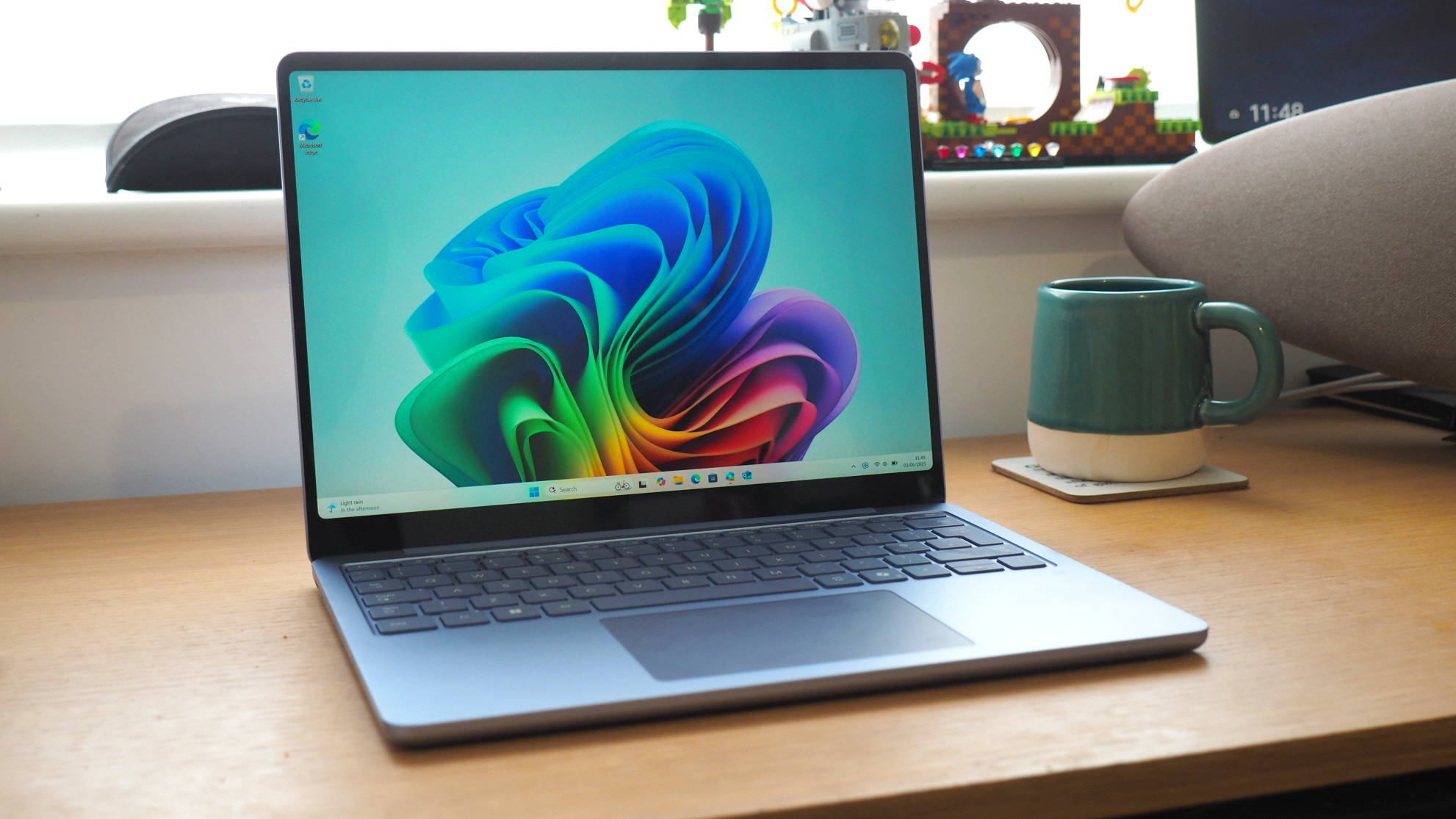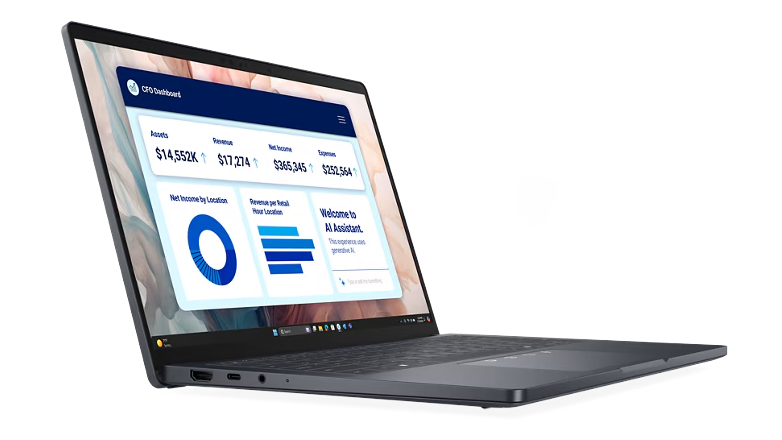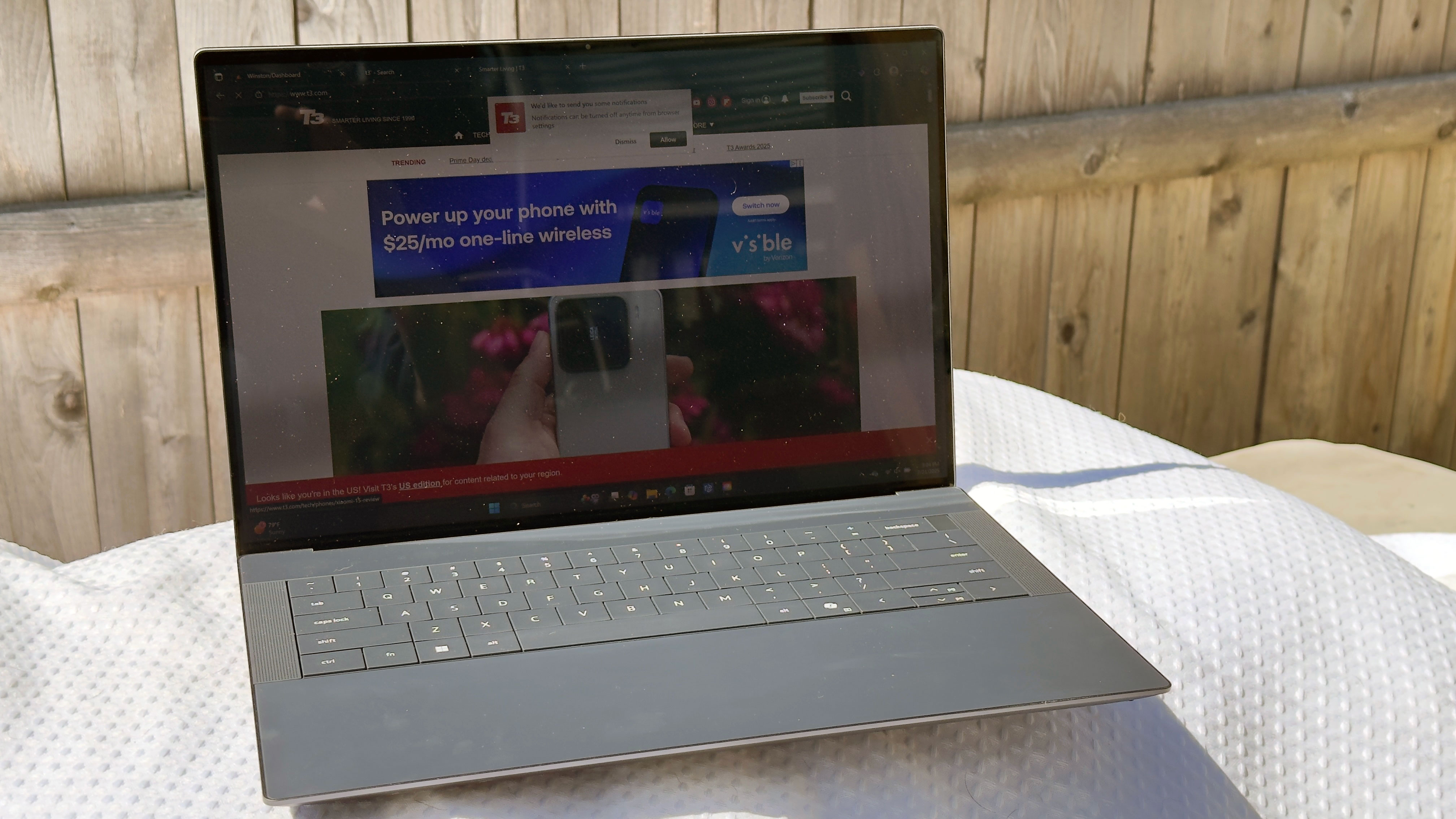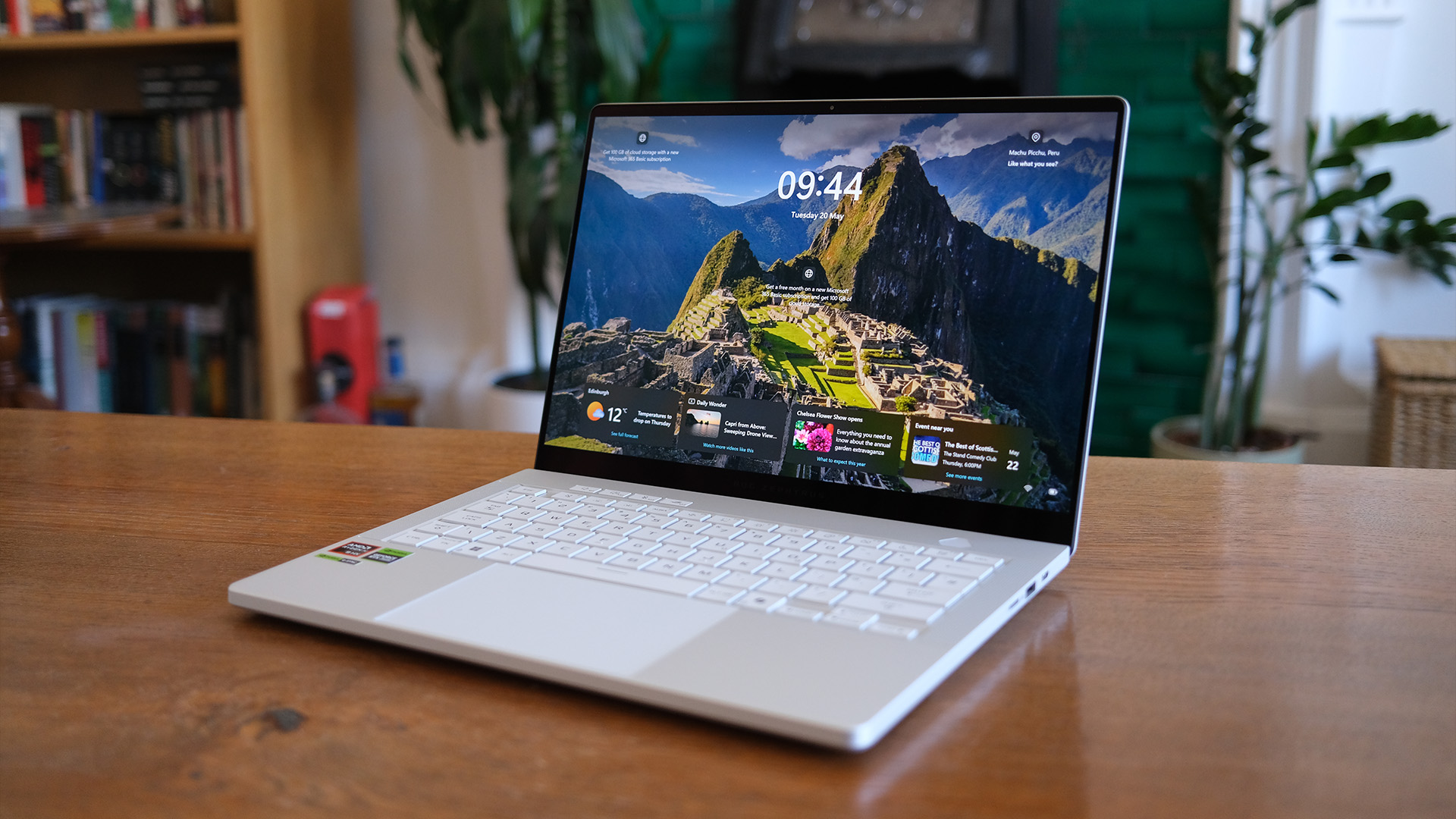I need a new laptop – here's why I'd pick Dell, Microsoft or Asus to replace an outgoing Windows 10 machine
The 3 best laptop options to replace that ageing Windows 10 device

10 years. You might get less prison time for murder. That’s the innings Windows 10 has put in. It came out in July 2015, and official support ended for it on 14 October 2025.
We were there in the beginning, in the early years when Windows 10 was torn apart by every know-it-all commenter on the internet. But 10 years on? Windows 10 did alright.
But if you have a PC that can’t make the jump to Windows 11, it’s definitely time to consider a laptop upgrade. Sure, the two systems don’t look or feel all that different at their core. And the value of Microsoft’s various try-hard AI Windows 11 features is up for debate.
What you do need are Windows security updates, if you plan on using the internet or applications beyond Notepad anyway. Not having those updates puts you at greater risk of malware and other nasties that open you up to all kinds of scams.
Microsoft offers what it calls an ESU (extended security updates) programme. But since you have to pay $30 for a year of that, or 1000 Microsoft points, perhaps it’s time to put that cash towards an actual PC upgrade instead. Here are three of the best options:
T3's Top 3

One issue with Microsoft laptops in the past is the more affordable ones seem great value on paper. But when you look at how much you have to pay to get a decent spec? Not so hot. This isn’t so much of a problem with the Surface Laptop 13, where the base version is good enough to make a solid workhorse family PC. It’s cute, it’s portable, the battery lasts for ages, and it has a Snapdragon processor tailor-made for the whole AI movement that we're in.

Those with some knowledge of laptop history will think of the Dell Premium family as the new identity for the XPS range. That has gone to the great discount bin in the sky, but what replaces it is pretty familiar. The out-there design of the invisible touchpad, the unusual touch-sensitive soft keys and large-keyed keyboard give the Dell 14 Premium a style all of its own. It’s not ultra-light, though (at 1.66kg), because this is a real performance machine.

Alongside the Razer Blade, the ROG Zephyrus has become the key series for serious gaming laptops that are also small, light and all-round portable. You get the quality of build of a style laptop, matched with the Nvidia RTX-series graphics cards that can handle the latest games and employ the latest techniques, like DLSS 4 with frame generation. So you don't have to think of this option as for gamers only, it's a versatile solution for all.
Microsoft v Dell v Asus: Pricing
Microsoft Surface Laptop 13
Microsoft’s lower-cost Surface PCs have always offered superficially attractive pricing, but the sting was an upgrade cost a fortune. That’s less of an issue with the latest 13-inch Surface, and you can thank AI.
Why? The RAM floor for these modern AI PCs has raised to 16GB rather than the old 8GB minimum. And if you don’t want to spend the extra on a storage upgrade to 500GB, consider a much more affordable external SSD for regular file offloads. Good value then? Yup! Plus, Microsoft always nails a laptop that looks, feels and sounds nice.
Get all the latest news, reviews, deals and buying guides on gorgeous tech, home and active products from the T3 experts
Dell 14 Premium
Windows 11 PCs like the Dell 14 Premium can initially seem quite imposing. They aren’t cheap. But for the extra money you’re assured, with Dell at least, a PC that comes with no nasty surprises.
You get a good amount of RAM, a solid load of storage. There’s a big jump in cash to the higher-end specs of this laptop, but that’s because you’re getting a whole different kind of PC, one with a dedicated Nvidia RTX 4050 graphics card, and an OLED screen panel. Great if you want that extra power.
Asus ROG Zephyrus G14
There’s no getting around it. Hand has to go in pocket to get a Asus ROG Zephyrus G14. Its starting £1899 RRP isn't small – and rises to multiple thousands for the top specs. As ever, online prices will vary (thankfully), as you can see from the shopping widgets on this page.
This laptop is from the rarified climes of the genuinely ultraportable gaming laptop. Making one of these is tricky in the first place. Making one that doesn’t overheat at the first sign of strain is even trickier. Specs start off with the relatively low-power RTX 5050. But to really see what laptop gaming is about, we prefer starting with at least an RTX 5060.
Microsoft v Dell v Asus: What's unique?
Microsoft Surface Laptop 13

You might think the key draw here is it’s a Windows laptop by the maker of Windows. But that’s not really it. Microsoft maintains a certain attention to detail across what might be considered the secondary parts of a laptop, even in its more down-to-earth affordable models like this.
This means you’re not going to get trash speakers, common among laptops; the touchpad isn’t going to be a squeaky plastic mess; and the webcam is not going to use the very cheapest sensor in some Chinese supplier’s roster.
While you can find plenty of laptops that are more conspicuously value-led than the Surface Laptop 13, they probably don’t have this sense of not dropping the ball anywhere.
Dell 14 Premium

Dell’s USP is it’s not boring. A few years ago Dell made one of the biggest stylistic lunges we’d seen in laptops for a while. The XPS series ditched the delineated touchpad, and swapped function keys for touch pads. It was a controversial move, but one Dell has stuck with even after the entire XPS brand has been dumped.
The touchpad appears to extend across the whole width of the laptop, which it can only do because the pad (and no it’s not full width) uses haptic feedback rather than a mechanical click. And touch sensitive function buttons? They remain a polariser but give the Dell 14 Premium a sci-fi flair you don’t get elsewhere.
Add in a heap of power and this Dell is a strong workhorse, too.
Asus ROG Zephyrus G14

The Asus ROG Zephyrus G14’s most notable element is basically its entire concept. It’s a powerful gaming laptop crammed into the shell of an ultraportable. A dream come true for loads of folks.
It’s a 14-inch screen laptop that’s 15mm thick and just a smidge over 1.5kg in weight. Sure, that’s no slim-and-light gold standard, but who’s going to notice an extra 200g in a rucksack?
In proper gamer style, the Zephyrus G14 also has a swoosh of LEDs across its lid. They are white LEDs, so we’re not talking a full-on gamer’s RGB paradise. And we’re grateful. A little restraint goes a long way. The keyboard backlight is an RGB disco palace, mind.
Microsoft v Dell v Asus: Performance
Microsoft Surface Laptop 13
Submit the high-end versions of the Microsoft Surface Laptop 13 to a few benchmark tests and it’ll do a great job. Blazing CPU speeds for the cash.
But this one does come with a warning note or two: this laptop uses processors from the Qualcomm Snapdragon series, the OG kings of the “made for AI” scene.
This can cause some compatibility and performance issues with a few apps (and games), particularly legacy ones that definitely won’t have been updated since these new-breed PCs started appearing. So how deep is your software library?
Dell 14 Premium
There is no weak version of the Dell 14 Premium. They all come with at least a 2nd Gen Intel Core Ultra 7, 16GB RAM and 512GB SSD. For basically any productivity job we are good to go from the ground floor spec.
The processor is from Intel’s performance series, for much better multi-core power than the chipsets you get in the also-great chips made for super slim and light models.
For all its cafe-friendly looks, this can be a legit desktop-replacer. You do get all-day battery life too, but this is more of a performance laptop than a battery-sipper. Think up to 8 hours, not 12+.
A discrete graphics card is an option too, but as it maxes out at an Nvidia RTX 4050, so the 14 Premium is really not the obvious pick for gamers.
Asus ROG Zephyrus G14
Everyone else can go home now. The latest generation of Asus ROG Zephyrus uses Ryzen 9 270 (and up) processors and Nvidia RTX 50-series graphics cards for top-billing performance in daily laptop jobs and for gaming.
There are just a few physics-related compromises to note here. First, the Asus ROG Zephyrus G14 is going to make more noise than a true slim and light portability PC.
And you can only expect it to last a few hours off a charge – around four is realistic, when not gaming. You lose most of the laptop’s power when running off battery too, as with every hardcore gaming laptop.
Microsoft v Dell v Asus: Which wins?
This is a tough one, as your choice is going to be heavily skewed by what you actually need to-day-to-day.
But it’s the Dell 14 Premium that inhabits a cosy middle ground that does the job for anyone who needs a laptop that can be a person’s – or family’s – only computer.
It’s portable but it has plenty of power on reserve. And it looks and feels about as luxurious as laptops come too, even if some of Dell’s design choices continue to raise an eyebrow or two.
Price-wise, however, Microsoft's lovely-designed Surface Laptop takes the win; it's like a Windows 11 Apple MacBook beater.
Or if you need more power, whether for gaming or intense processing/graphics tasks and apps, then Asus is just the ticket.
Honourable mentions
If you fancy a hybrid laptop instead, take a look at the HP Omnibook Ultra Flip. It has a 360-degree hinge, and includes a stylus – welcome, as this is not a cheap laptop. It’s a quality PC throughout, and uses Intel Ultra CPUs, the kind made for ultra-long battery life.
Or for something more conventional but equally a total all-rounder, there’s the Lenovo Yoga Slim 7. This series has been a good go-to option for years. We reviewed the 15-inch screen version, but there’s a 14-inch one too if you prefer to prioritise portability.

Mike is T3's Tech Editor. He's been writing about consumer technology for 15 years and his beat covers phones – of which he's seen hundreds of handsets over the years – laptops, gaming, TV & audio, and more. There's little consumer tech he's not had a hand at trying, and with extensive commissioning and editing experience, he knows the industry inside out. As the former Reviews Editor at Pocket-lint for 10 years where he furthered his knowledge and expertise, whilst writing about literally thousands of products, he's also provided work for publications such as Wired, The Guardian, Metro, and more.
You must confirm your public display name before commenting
Please logout and then login again, you will then be prompted to enter your display name.
